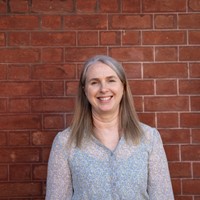What is a Bishop?
The following questions will be framed around our local understanding of a bishop. Bishops are first ordained, and then if they move to another diocese, they are installed. For example, Bishop Michael Kennedy was ‘ordained’ as the Bishop of Armidale and then ‘installed’ in the Diocese of Maitland-Newcastle. He is ultimately responsible for teaching, governing and sanctifying in his diocese. The bishop is Christ’s representative and leads his ‘people’ in communion with the Pope. His office is called an episcopacy.
Where does the name 'bishop' come from?
As with many words and terms in the Catholic Church, the word existed before the Church (Hmmm, that reminds me of something: John 1:1-5). It comes from the Greek word ἐπίσκοπος (epískopos), which translates to an overseer or superintendent. It morphed throughout history from episkopos to episcopus (Latin), then eventually through to bishop in Modern English. This is where we also get the word episcopal, which relates to all things ‘bishop’. Etymology is so much fun.
How does a Bishop get chosen?
The Church is constantly discerning leadership. There are a few steps involved. The Australian Catholic Bishop’s Conference are encouraged to put names forward. Then, due diligence occurs through discernment, consultation, background checks, surveying and questioning – some effort is made to discern the needs of the diocesan community where the vacancy is situated. A list of potential priests (or current bishops) is then situated with the papal nuncio (or ambassador), who is currently an American Archbishop – Charles Balvo, and three names are chosen. He makes an extensive report of the suggestions to the Dicastery (office) for Bishops in the Vatican, but ultimately, the Pope has the final say.
What is a Diocese?
There is just one Catholic Church. However, it is big both in people (the People of God) and in its territory (the earth). So, a diocese forms a small part of that ‘People of God’ in which the bishop is entrusted to their care in a particular area (Church). Priests are the chief collaborators in the life and mission of the Church and lay people, by virtue of their baptism, also assist the bishop in the mission life of the diocese.


What are the unusual hats that the bishop wears?
These hats, or better termed headdress, are called a mitre and a zucchetto. Cardinals, archbishops and the pope also wear them. A mitre is a tall, pointed one with two stiff tongues/bellows/shields/peaks (you choose) shapes back and front. The two ribbons that hang down the back are called lappets. Mitres come in various seasonal colours. It is worn over the zucchetto. The zucchetto is coloured depending on the position. For a bishop, the colour is amaranth red/violet/purple (whatever is easiest). It is generally made of silk and has a little ‘stem’ of twisted chord to make it easier to take on and off.
What colour signifies a bishop?
Colour, as we know, is a perfect tool in helping to communicate and recognise someone’s office/role, and to highlight meaning and symbolism. As we saw with the bishop’s zucchetto, the amaranth red (I like to use this colour) means that someone can instantly recognise a bishop from that colour. The bishop will also wear other items of that colour such as a cassock (like a coat). If he chooses to wear a black cassock, it will have the amaranth red piping and a sash of the same colour. It is interesting to note that before the 16th Century, the colour was green.
How long can a bishop serve his diocese?
It's not such a straightforward question. It really depends on what the Church has planned for the bishop. Usually, the diocese in which the bishop is ordained will be the one he remains in until he submits his resignation to the Pope at the age of 75. However, a bishop could be moved, such as Bishop Michael coming to Maitland-Newcastle from Armidale or in response to other needs of the Australian Church where they may be called to an Archdiocese.
You are walking along, and you meet the Bishop. What do you call him?
Most of the time, when you meet a bishop, it is in passing and not so formal. Traditionally, bishops were addressed as ‘My Lord’. However, in our more relaxed society, most of the time it is OK to call him Bishop X. For example, this could be Bishop Michael or Bishop Kennedy. In this diocesan context, we know that Bishop Michael is fine with being addressed as such. I’m sure you will know fairly quickly if you didn’t get it right. I wouldn’t lose sleep over it though.


Why does he sometimes carry a shepherd's crook?
In church circles and, depending on what book you are reading, the shepherd’s crook is called a crosier or a pastoral staff. It symbolises authority but as the second name alludes to, it has a pastoral significance as well as the bishop gives spiritual guidance to his ‘flock’. The bishop receives this symbol at his ordination. You will see it used when he is celebrating mass and at more formal liturgies. He also has a special ring, a pectoral cross and his own coat of arms. It could be a good conversation starter to find out about them the next time you bump into a bishop.
Are there special events that are just for the Bishop?
Simple answer: Yes! Bishop ‘only’ events are Chrism Mass (check the 10 questions on this one) and Ordination of priests and deacons. For other celebrations such as the dedication of a church, the Rite of Election (for people who are going to be received into the Church at Easter) and the sacrament of Confirmation, the bishop is the Ordinary Minister for these. However, these must be delegated if he is unable to preside. As the bishop has pastoral care of the clergy, it is also customary that he presides at their funerals.
Follow mnnews.today on Facebook.

